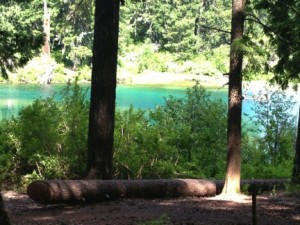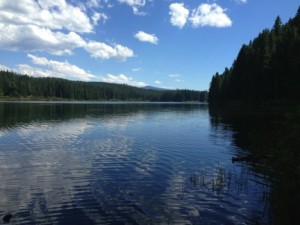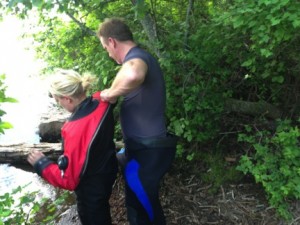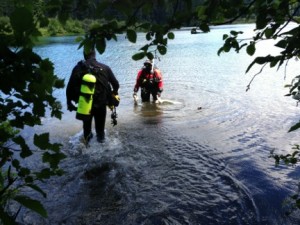Recently I had the incredible opportunity to scuba dive in Clear Lake, a serene, freshwater lake that sits about 75 miles east of Eugene. I was told about the lake by Sean Nolan, a friend through the aquarium and NAUI instructor. After hearing about my recurring low visibility dives on the coast, he graciously offered to take me to Clear Lake, where the visibility is known to be up to 200 feet! Besides the obvious allure of great visibility, this would also give me experience with altitude diving, as Clear Lake sits at an elevation of 3,012ft. I discussed the plan with Vallorie, who liked the idea of broadening my dive experience, and approved the trip pending my submission of a dive plan.
The drive from Eugene to Clear Lake was beautiful; I especially liked the fact that it was sunny and 85 degrees out, one of the benefits to leaving the coast and heading to the valley. Clear lake is situated in the Cascade Mountains and serves as the headwaters to the McKenzie River, the primary source of drinking water for Eugene. Volcanic eruptions 3000 years ago, created the beautiful oasis, leaving behind breathtaking scenery of volcanic rock that seems to tumble into the lake, and a unique bottom composition of thick ash. Because of this, it is important to avoid touching the bottom while diving so as not to diminish the visibility. Finely tuned buoyancy control and a modified frog kick with fin tips pointed toward the surface) helps to avoid disturbing the ash bottom.
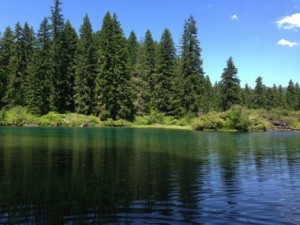
Clear lake is primarily fed by snow runoff, which filters through underground caverns for more than 20 years before emptying into Clear Lake. Its glacial origin results in very cold water, about 40°F or less year round, making a drysuit essential for a comfortable dive. The fact that inflow is primarily from subsurface drainage through volcanic rock results in an unusual chemical and biological composition. Major ion concentrations are higher than most other Cascade lakes, however nutrient supply is limited. The chemical composition, in addition to the frigid temperatures, gives rise to an oligotrophic lake, meaning that primary productivity is very low. The biologically unproductive waters are left very transparent and saturated with dissolved oxygen.
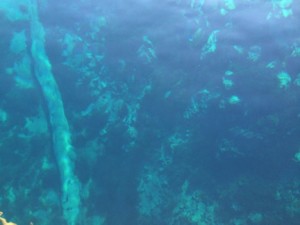
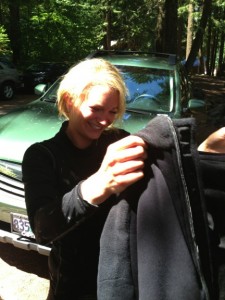 We entered the water on the western bank, and made our way towards the center of the lake where the depth increases to about 45ft. As soon as we hit deeper waters I immediately wished I had an underwater camera; the crystal clear water reminded me of the tropics, minus the warm water and bustling coral reefs.
We entered the water on the western bank, and made our way towards the center of the lake where the depth increases to about 45ft. As soon as we hit deeper waters I immediately wished I had an underwater camera; the crystal clear water reminded me of the tropics, minus the warm water and bustling coral reefs.
Although this water wasn’t teeming with life, there was still plenty to see. Brilliant fields of green algae pillowed over the ash bottom like giant blankets, and a canyon of hardened lava protruded from the northern edge of the lake. We swam south, closely inspecting the algae and admiring the incredibly serene and clear water. Even in a dry suit I began to get cold within a half an hour, even shorter for Sean who was diving wet. The profile in my dive plan stated that our bottom time would be 40 minutes, so when we hit the half hour mark we turned around and made our way back to the exit point. We both had the same response upon surfacing… we wished we had an underwater camera! 